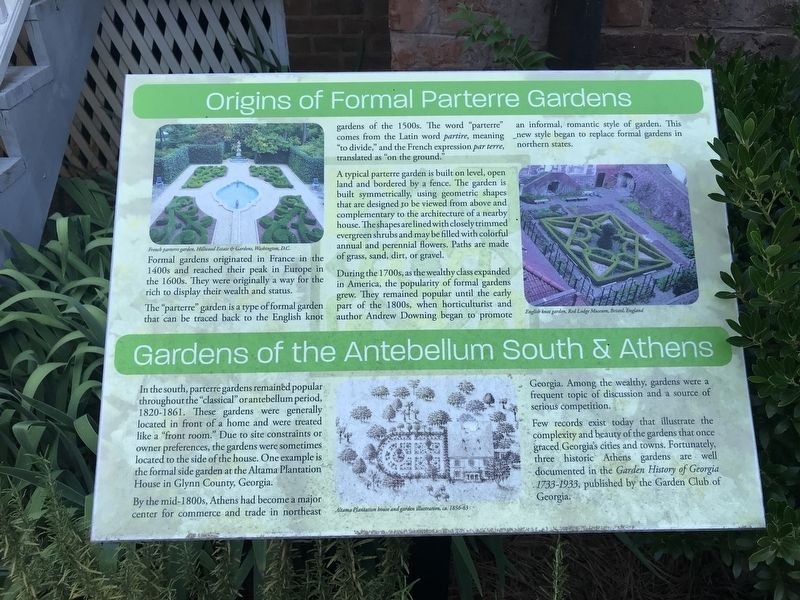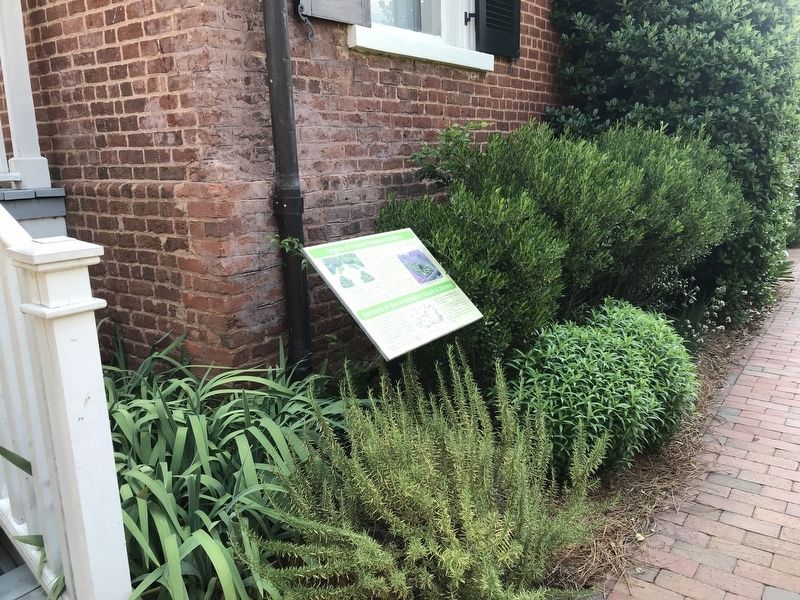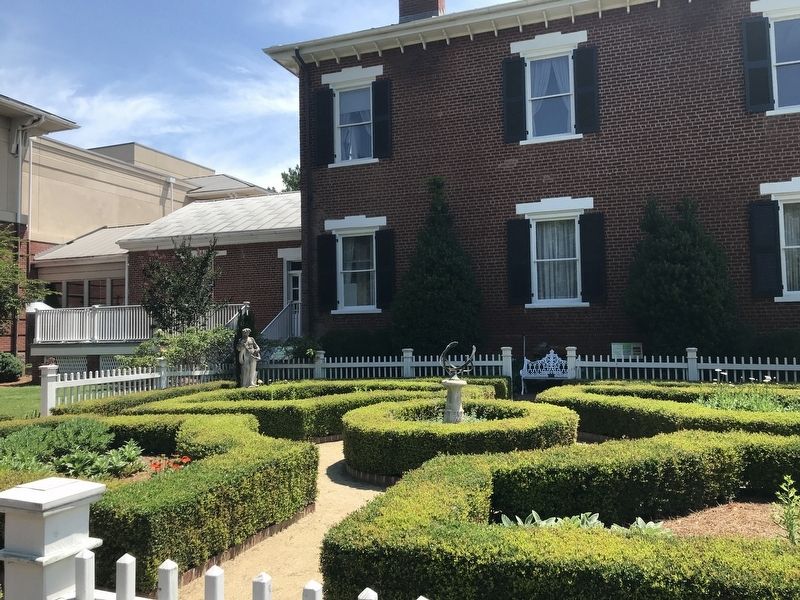Athens in Athens-Clarke County, Georgia — The American South (South Atlantic)
Origins of Formal Parterre Gardens/Gardens of the Antebellum South & Athens
Inscription.
Origins of Formal Parterre Gardens Formal gardens originated in France in the 1400s and reached their peak in Europe in the 1600s. They were originally a way for the rich to display their wealth and status.
The “parterre” garden is a type of formal garden that can be traced back to the English knot gardens of the 1500s. The word “parterre” comes from the Latin word partire, meaning “to divide,” and the French expression par terre, translated as “on the ground.”
A typical parterre garden is built on level, open land and bordered by a fence. The garden is built symmetrically, using geometric shapes that are designed to be viewed from above and complementary to the architecture of a nearby house. The shapes are lined with closely trimmed evergreen shrubs and may be filled with colorful annual and perennial flowers. Paths are made of grass, sand, dirt, or gravel.
During the 1700s, as the wealthy class expanded in America, the popularity of formal gardens grew. They remained popular until the early part of the 1800s, when horticulturist and author Andrew Downing began to promote an informal, romantic style of garden. This new style began to replace formal gardens in northern states.
Gardens of the Antebellum South & Athens In the south, parterre gardens remained popular throughout the “classical” or antebellum period, 1820-1861. These gardens were generally located in front of a home and were treated like a “front room.” Due to site constraints or owner preferences, the gardens were sometimes located to the side of the house. One example is the formal side garden at the Altama Plantation House in Glynn County, Georgia.
By the mid-1800s, Athens had become a major center for commerce and trade in northeast Georgia. Among the wealthy, gardens were a frequent topic of discussion and a source of serious competition.
Few records exist today that illustrate the complexity and beauty of the gardens that once graced Georgia's cities and towns. Fortunately, three historic Athens gardens are well documented in the Garden History of Georgia 1733-1933, published by the Garden Club of Georgia.
Captions (left to right)
• French parterre garden, Hillwood Estate & Gardens, Washington, D.C.
• Altama Plantation house and garden illustration, ca. 1856-63
• English knot garden, Red Lodge Museum, Bristol, England
Topics. This historical marker is listed in this topic list: Horticulture & Forestry.
Location. 33° 57.85′ N, 83° 22.586′ W. Marker is in Athens, Georgia, in Athens-Clarke County. Marker can be reached from the intersection
of State Street and Hoyt Street, on the right when traveling north. Marker is on the west side of the Historic Ware-Lyndon House Museum. Touch for map. Marker is at or near this postal address: 211 Hoyt St, Athens GA 30601, United States of America. Touch for directions.
Other nearby markers. At least 8 other markers are within walking distance of this marker. Ware-Lyndon House Garden Features (here, next to this marker); The Parterre Gardens of Athens (a few steps from this marker); Ware-Lyndon House Through the Years (within shouting distance of this marker); The Life and Times of Two Athens Families (within shouting distance of this marker); Church-Waddel-Brumby House (approx. 0.2 miles away); Dr. Moses Waddel (approx. ¼ mile away); First Presbyterian Church (approx. ¼ mile away); The Athens Double-Barrelled Cannon (approx. 0.3 miles away). Touch for a list and map of all markers in Athens.
Credits. This page was last revised on June 14, 2022. It was originally submitted on June 14, 2022, by Duane and Tracy Marsteller of Murfreesboro, Tennessee. This page has been viewed 142 times since then and 22 times this year. Photos: 1, 2, 3. submitted on June 14, 2022, by Duane and Tracy Marsteller of Murfreesboro, Tennessee.


